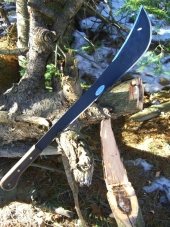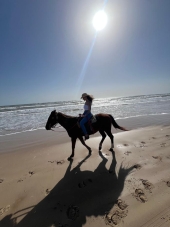posted 4 years ago
That's a tall, order, there, Jon.
Personally, I don't think tires are good for humans. Not for their intended purpose, not used for building (except in some certain cases with very stringent requirements), and certainly not in conjunction with food growing or living.
But some people don't have a problem with them, and that's fine.
That said, I feel that it might be a good idea to look at what you wish to achieve from a more objective perspective. You don't want to go through with your plans married to the idea of how you're going to do it and then get there and get it all done, and realise that it's actually not what you want.
I am glad to hear that you are considering other approaches to the earthship-style dwelling. Rammed earth is my personal favourite idea here. It's essentially exactly the same approach, except that you tamp a stabilized earth mixture down in between the same sorts of forms that are used for concrete, but because you're using a largely dry mix, a section is self-supporting as soon as it's tamped (it cures over time, but the fact remains). A similar method involves making bricks out of the same mixture.
I feel, though, that an earth-linked or underground dwelling might not be the best fit for permafrost. Alaska has been experiencing some very interesting problems involving increasingly common record temperatures and heaving/settling land as the permafrost thaws, becoming less-than-permafrost.
From my reading, I get the idea that choosing a spot elevated enough to allow some excavation would be a good idea. I would first make a rammed earth slab thick enough to support the weight of the structure entirely. If money weren't a problem, I would use insulated concrete forms that are left in place to insulate the thermal mass. If I had to be thrifty, I would probably reuse the forms, doing sections of wall that I join with lintels to form doorways.
I might be wrong here, but for insulation around the exterior of the structure, I would actually look to employ an earthbag method, but filling with dry duff, woodchips, or any dry, insulative organic fill I could acquire. It would be packed tightly and then backfilled with subsoil at least a foot, but probably three, thick, so not only would critters have no easy way or reason to get there, if it somehow ignited, all that would happen is that it would slowly pyrolise in its earthen oven, and the resultant char would still be excellent insulation.
I suggest that you look at Paul's wofati concept. I would put a thick green roof structure atop it, enough to support a marauding grizzly? moose? elk? anything, including encroaching forest, should it come to that.
Personally, I really like the idea of the sunken log cabin with the root cellar basement and bermed sides with the south-facing greenhouse walkout. I don't know if an earthship is really the most practical approach in Alaska, seeing as how your primary resource is frozen half the time, and the rest of the time is thawing by a half-inch a day in the warm season. Some areas have lots of trees, though. It might be more permie to build with the trees, and into existing dips in the land, where there's appropriate drainage to not inundate you with every thaw.
But I reserve the right to be wrong. Please keep us posted, and good luck.
-CK
A human being should be able to change a diaper, plan an invasion, butcher a hog, conn a ship, design a building, write a sonnet, balance accounts, build a wall, set a bone, comfort the dying, take orders, give orders, cooperate, act alone, solve equations, analyze a new problem, pitch manure, program a computer, cook a tasty meal, fight efficiently, die gallantly. Specialization is for insects.
-Robert A. Heinlein

 2
2




 3
3




 1
1




 1
1








 2
2




 2
2










